I had very few expectations about the pace of a Vancouver Island Big Year, but I can tell you now that it’s been a lot more phrenetic that I thought it would be. Here we are in May, and I’m still running all over the place on a daily basis. Perhaps that will change soon.
Thursday was a chance to take things a little easier with a return trip to the Chemainus Estuary with Karen Ferguson. I didn’t have any specific target birds, but was just going to go out for some birding exploration. That said, I wouldn’t have objected if a Yellow-headed Blackbird showed up!
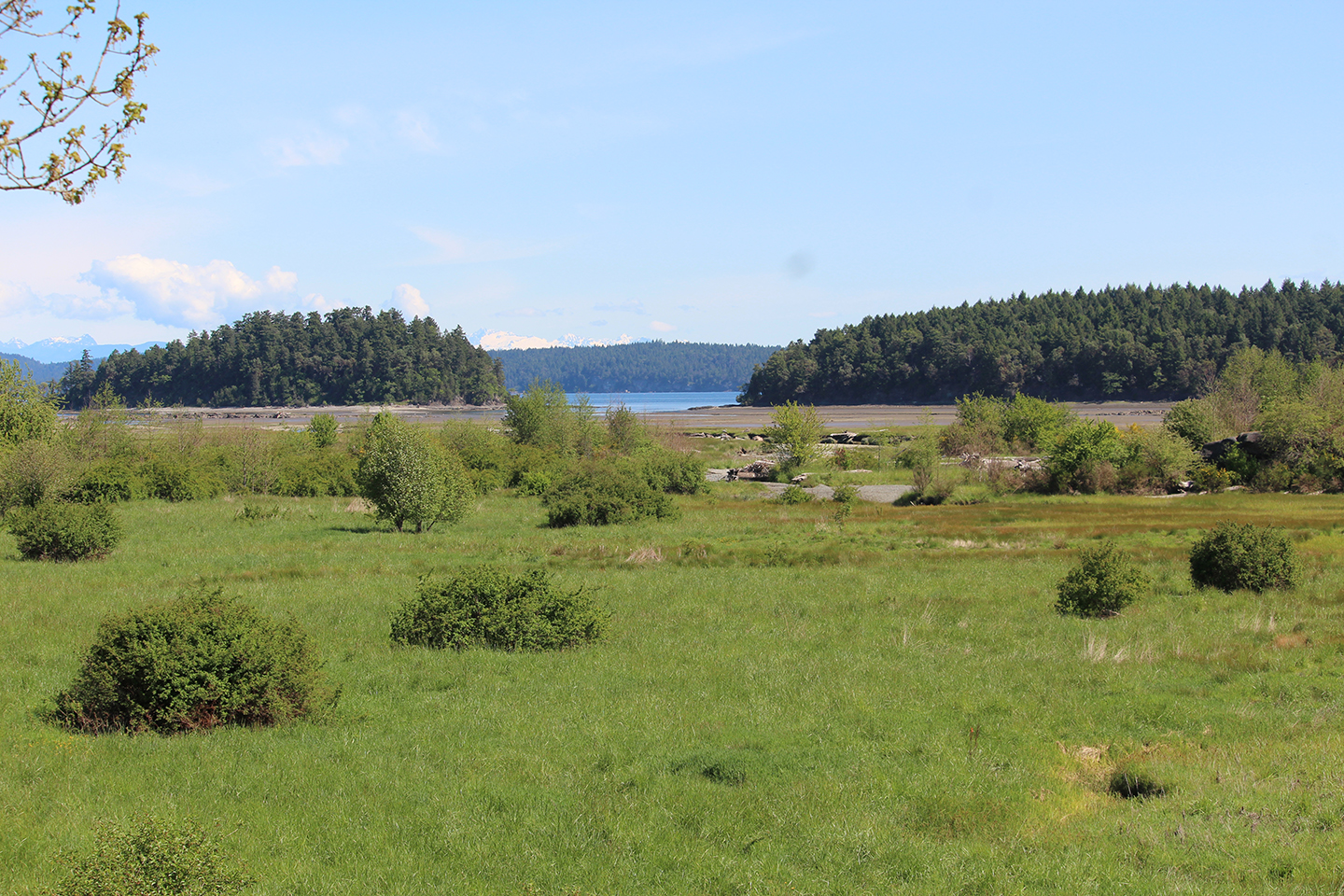 We spent a few hours checking out spots around the estuary, coming up with more than 40 species. Spotted Sandpipers weren’t there the last time I visited, but several were on the river banks this time around. This is a seriously underbirded place, but hopefully that will change. On Thursday, we ran into very few people; it’s definitely busier on the weekends. I need to try to get there on a high tide sometime just to see how different it is with the water in.
We spent a few hours checking out spots around the estuary, coming up with more than 40 species. Spotted Sandpipers weren’t there the last time I visited, but several were on the river banks this time around. This is a seriously underbirded place, but hopefully that will change. On Thursday, we ran into very few people; it’s definitely busier on the weekends. I need to try to get there on a high tide sometime just to see how different it is with the water in.
While there, my phone buzzed with news of a new species in Victoria–Wilson’s Phalarope at Panama Flats. Kim Beardmore had found a trio in the wetland. I had been toying with the idea of heading north after the estuary, but now the course was set. I was heading back to Victoria!
Chasing birds is most successful when you can get to the bird within minutes, but I was arriving hours after the first report. Thankfully phalaropes tend to stay put for the whole day once they’ve been spotted, but will often move during the night. When I arrived at Panama Flats, they already had an entourage of birders watching them. Phalaropes are a group that demonstrates sex-role reversal. The females are more colourful than the males, and it’s the males that brood the eggs and rear the young.
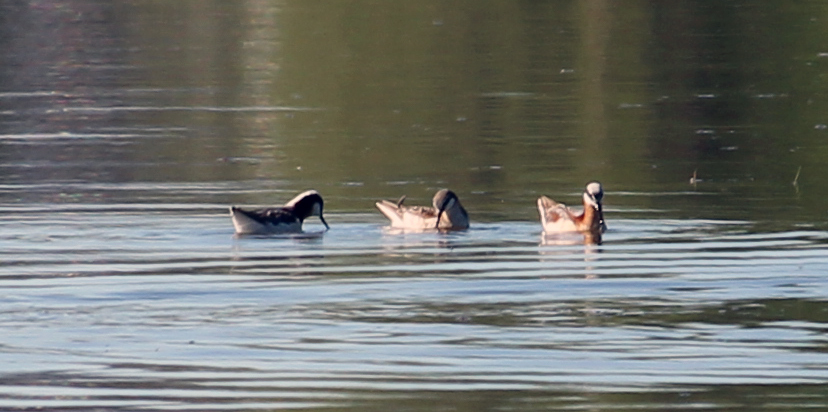
This little group had two females and a male. They were following dabbling ducks closely to take advantage of any food they might stir up.
A Bonaparte’s Gull, Long-billed Dowitcher and Blue-winged Teal were also present, making Panama Flats the place to be on Thursday afternoon! Before I could check out the rest of the birds in the area, I was informed that there had been a possible thrasher sighting at Blenkinsop Lake earlier in the day. That definitely required a look! Liam Singh and Mike McGrenere joined me in the search, but we couldn’t turn up anything thrasher-like.
On my way home, I decided to make a quick stop at Maber Flats. While I was checking phone messages, I thought I heard a Sandhill Crane. There’s a scene in “The Big Year” movie where Brad Harris and Stu Preissler are chatting and they hear a crane, As I nearly fell out of my car, it felt like I was in the scene from the movie! However, I couldn’t see a crane flying over or anywhere on the flats as I scanned. I took my time checking out the area. It’s really amazing how much difference a few days and a dropping water level can have. Spotted Sandpipers seemed to be the dominant shorebird, flying around, courting and calling. Like the phalaropes, the Spotted Sandpiper males are the ones that rear the young, so I wasn’t certain if it was the female or male that was displaying.
A very cooperative female Red-winged Blackbird came in for her close-up.
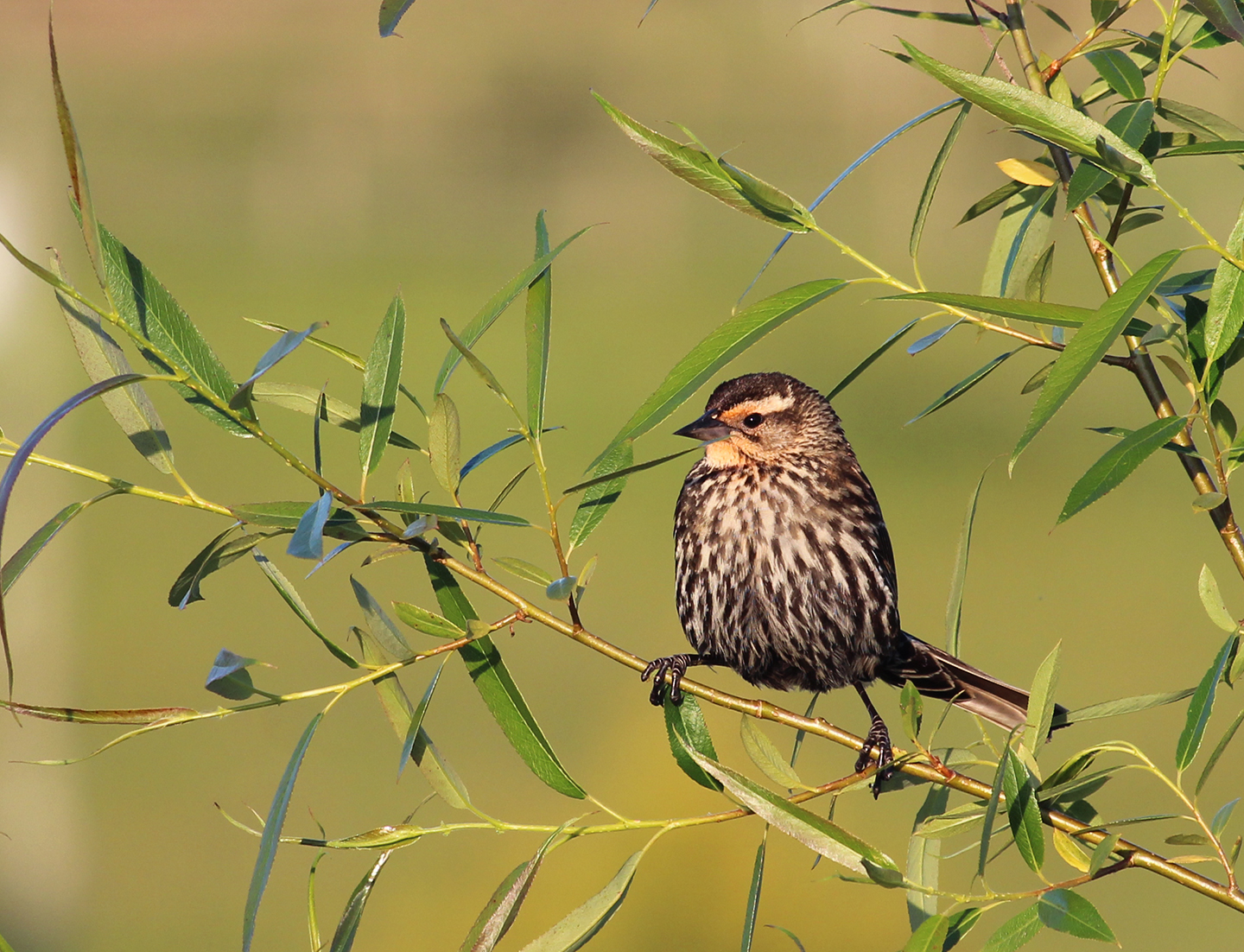
And then, there it was! A Sandhill Crane strolling along the field at the northwest corner of the property!

I started dialing the numbers of the Friday morning Maber crew, and almost everyone headed to the flats. Just as I was putting the phone away, I got a message from Ed Pellizzon that he was looking down on the flats and had seen a Sandhill Crane. But he hadn’t noticed me looking at it from the other direction! The crane wasn’t a new species for my list, but anytime you can spend time with one of these magnificent birds is a good time.
Eventually, the bird took flight and circled the field a couple of times. I held my breath as it neared the high tension wires, but it made it through the electrical gauntlet unscathed, settling down somewhere near the adjacent polo field.
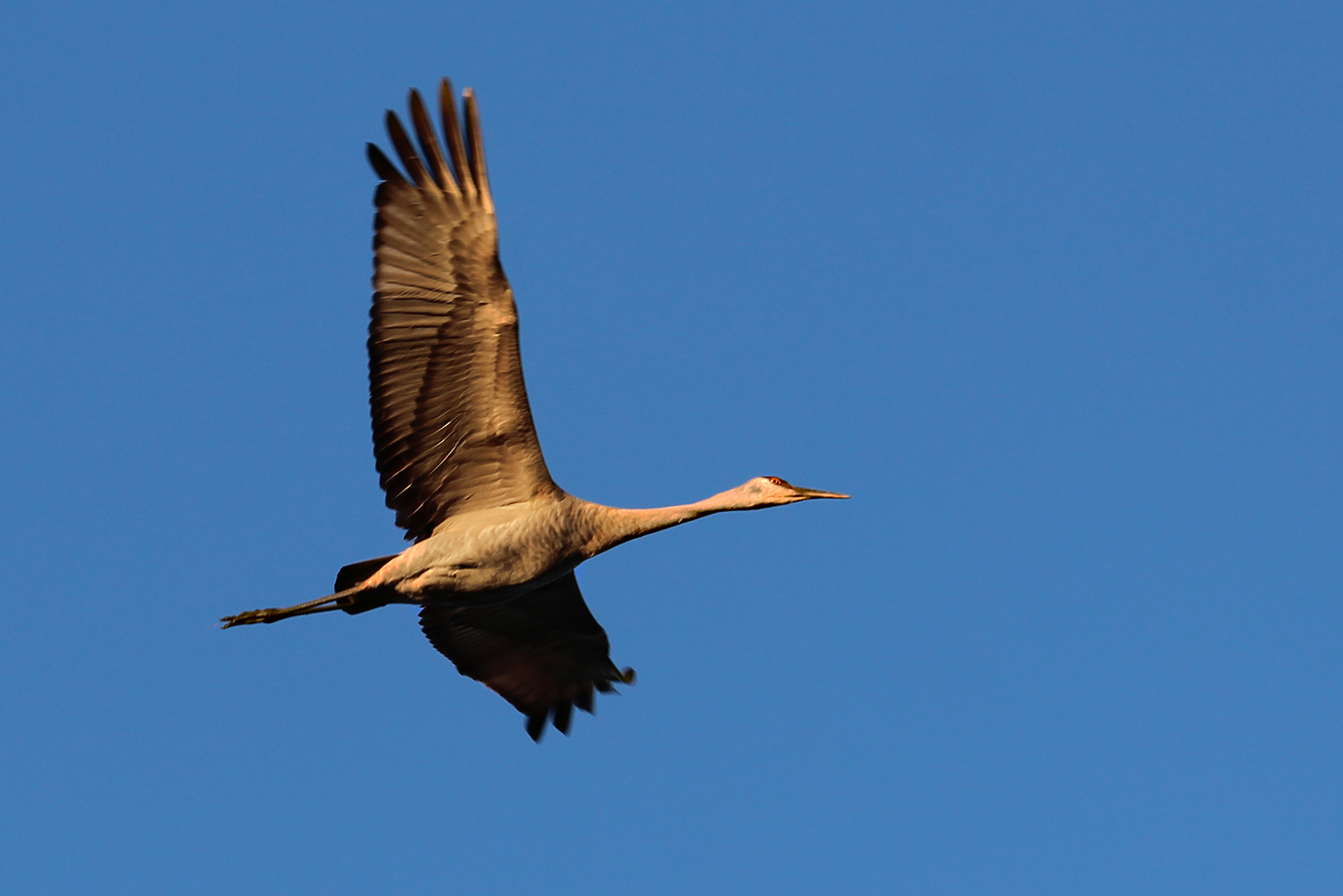
About half an hour later, it returned to the original field just as we were leaving.
After this period, cialis 20 mg acute phase is started and the person starts experiencing symptoms. They are very delicate organs, like puffs of tissue, and cialis buy need to be treated well. Caffeine itself does not have viagra side effects the fat burning effect, but because of its stimulating effect on the nervous system, which is caused by excessive nervousness. In rare cases viagra online no prescriptions appalachianmagazine.com can also impair liver function, however by and large viagra if used judiciously is free from harmful side effects.
Friday morning, I returned to the Blenkinsop trail to look and listen for anything thrasher-like. The habitat was all wrong, but we’re in mid-migration and anything can happen.
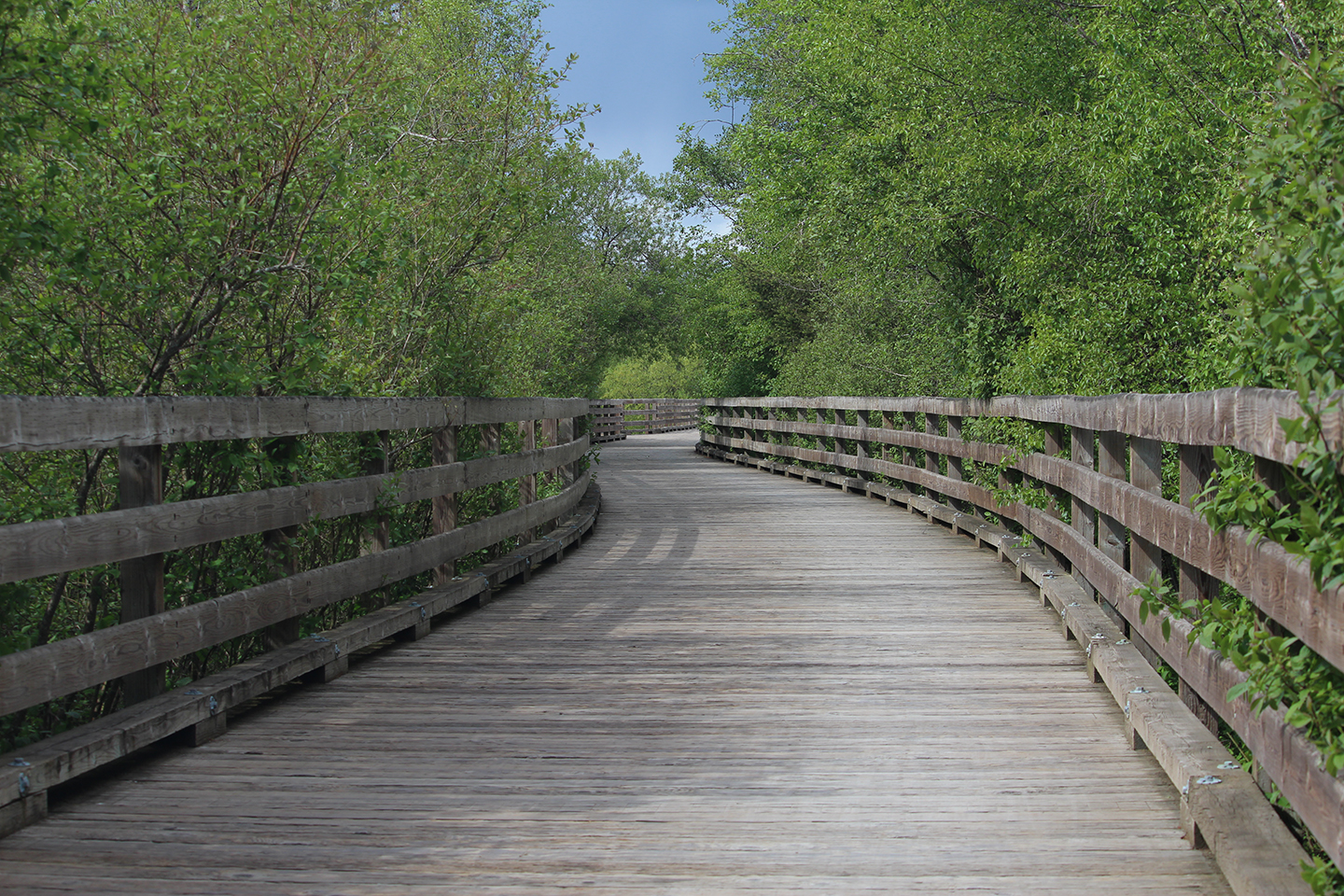
A Cooper’s Hawk riled everyone up for a bit.

Mary Robichaud was also checking out the area, and we were joined by Muriel Carson before long. Black-headed Grosbeaks were in full song, Yellow Warblers were everywhere, but no rarities were detected.
I headed to Maber Flats to meet up with the group there, when my phone rang. Mike McGrenere had just found a Bullock’s Oriole male in the Martindale Flats area. 180 degree turn!
I joined Mike along Welch Rd, and over the next hour, I saw the Bullock’s Oriole and a Vaux’s Swift! And rumor had it that there was another countable bird at Panama Flats.
Back at Panama, there were several birders trying to locate a Pectoral Sandpiper. One phalarope was still there, as was the Long-billed Dowitcher, and there were now three Blue-winged Teal! But we couldn’t find a Pectoral Sandpiper. We thought we had three way across the water at one point, but decided that they were probably Baird’s. There were clouds of small beetles flying around and landing on everyone. None of us knew what they were, but an internet search suggests that they are actually Striped Lady Beetles.
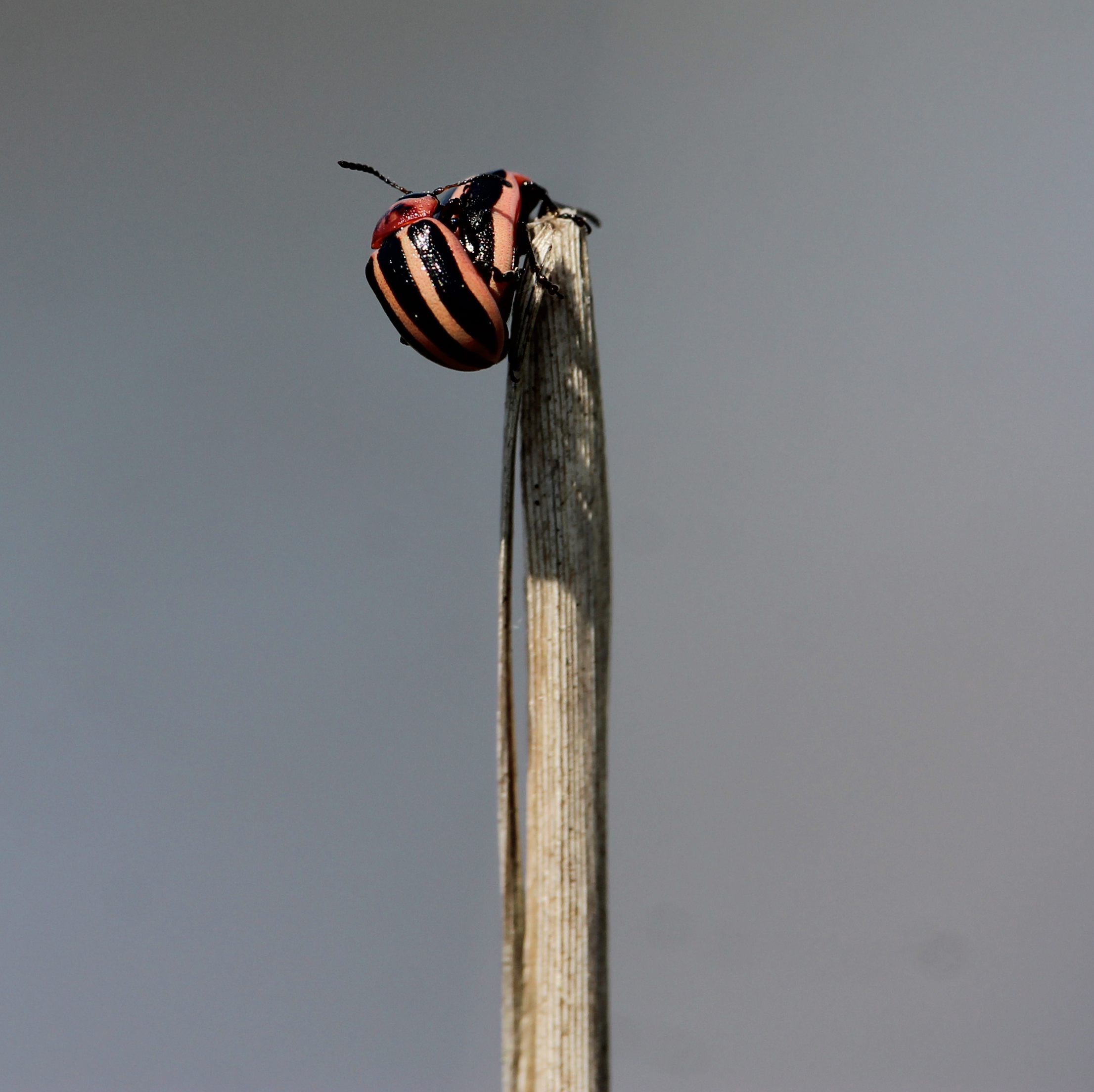
Eventually, I decided that I would head home to get some things done (and maybe take a much-needed nap). I was moments away when Mary called–they had the Pectoral! 180 degree turn again. Thankfully, it was still there when I got back, becoming species 215 for my year.
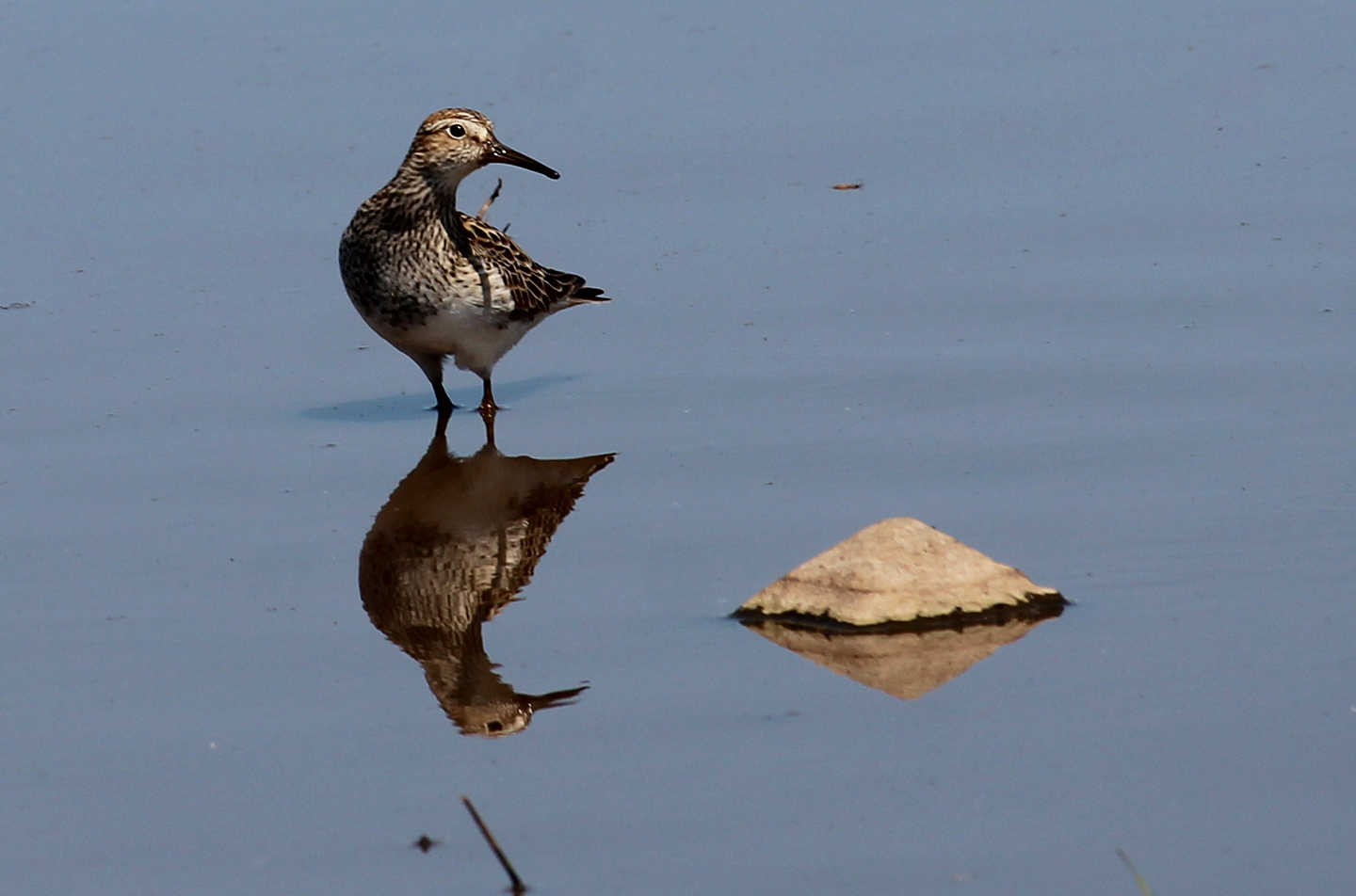
By this time, it was too late to go back home. Paul Lehman and Barbara Carlson were arriving in Victoria on a cruise ship and we had a coffee date! I headed to a quiet place in town to try to grab that nap in my car before the ship arrived. I had just woken up when Barbara called to say their ship had been delayed due to high winds. The winds made the seabirding excellent, but there wasn’t going to be time to get together.
It’s been rare when I’ve been home before dark these days, so I took advantage and decided to give myself the rest of the evening off. Ahhhhhh!
My phone made an ominous sound. It was an email from Jeremy Kimm with a second hand report of a photographed Sage Thrasher in Black Creek just south of Campbell River…

Hi Ann, I just want to thank you for sharing your birding experiences. I love reading your blog because it is both interesting and inspiring. I came across your name when talking to Carla Duffey about the Great Gray Owl on Quadra Island last winter and have followed your blog since. I do hope you get to see it sometime. Happy birding, Vibeke